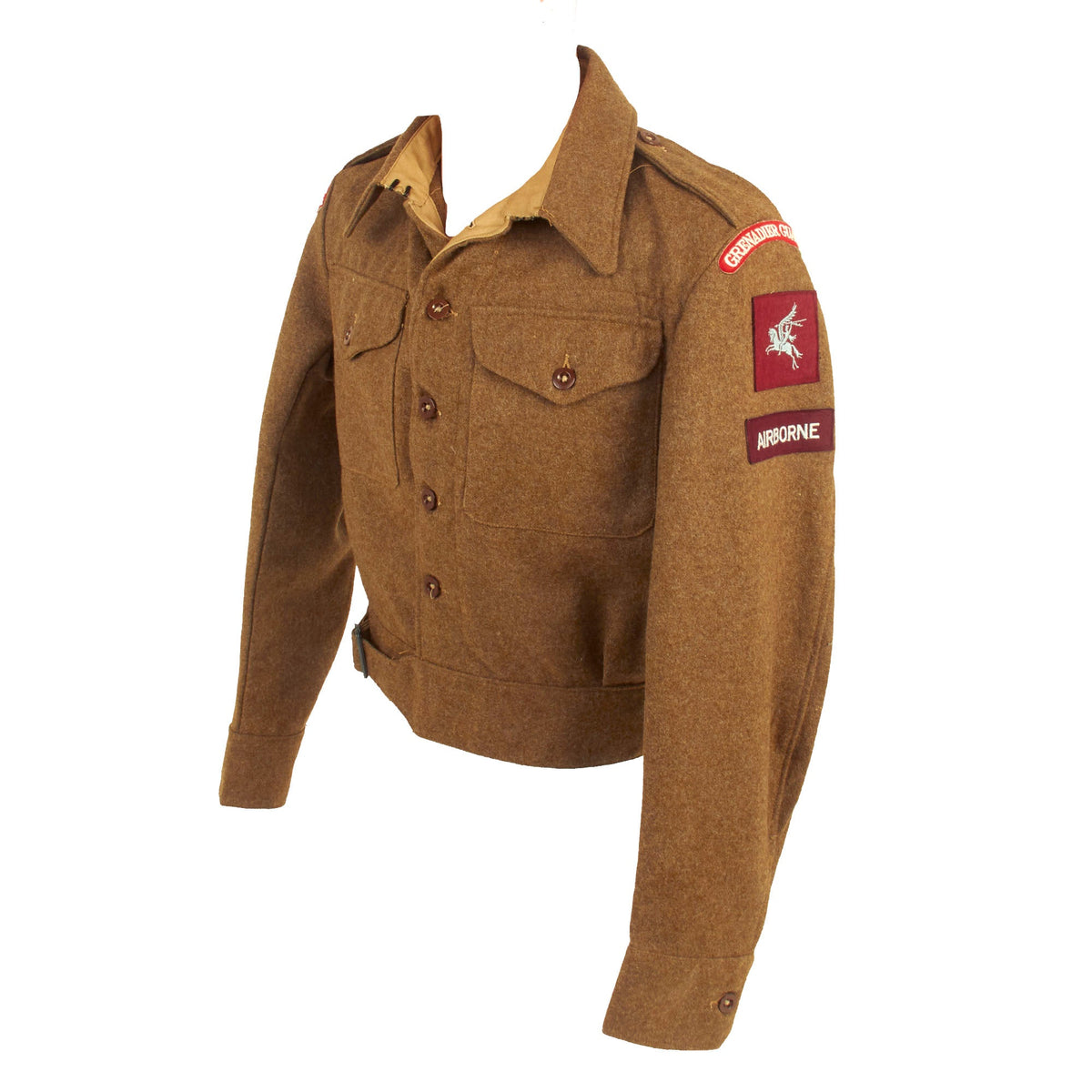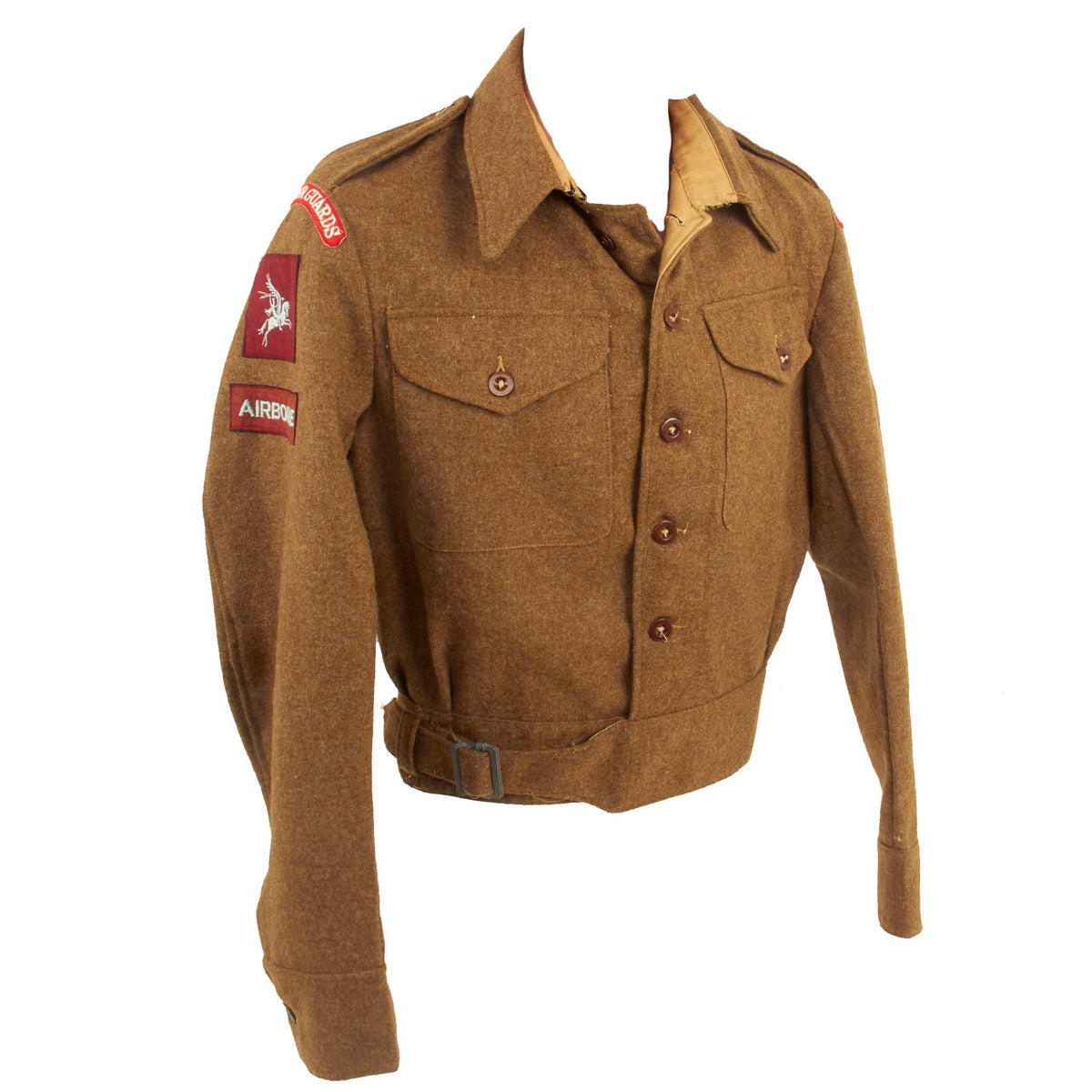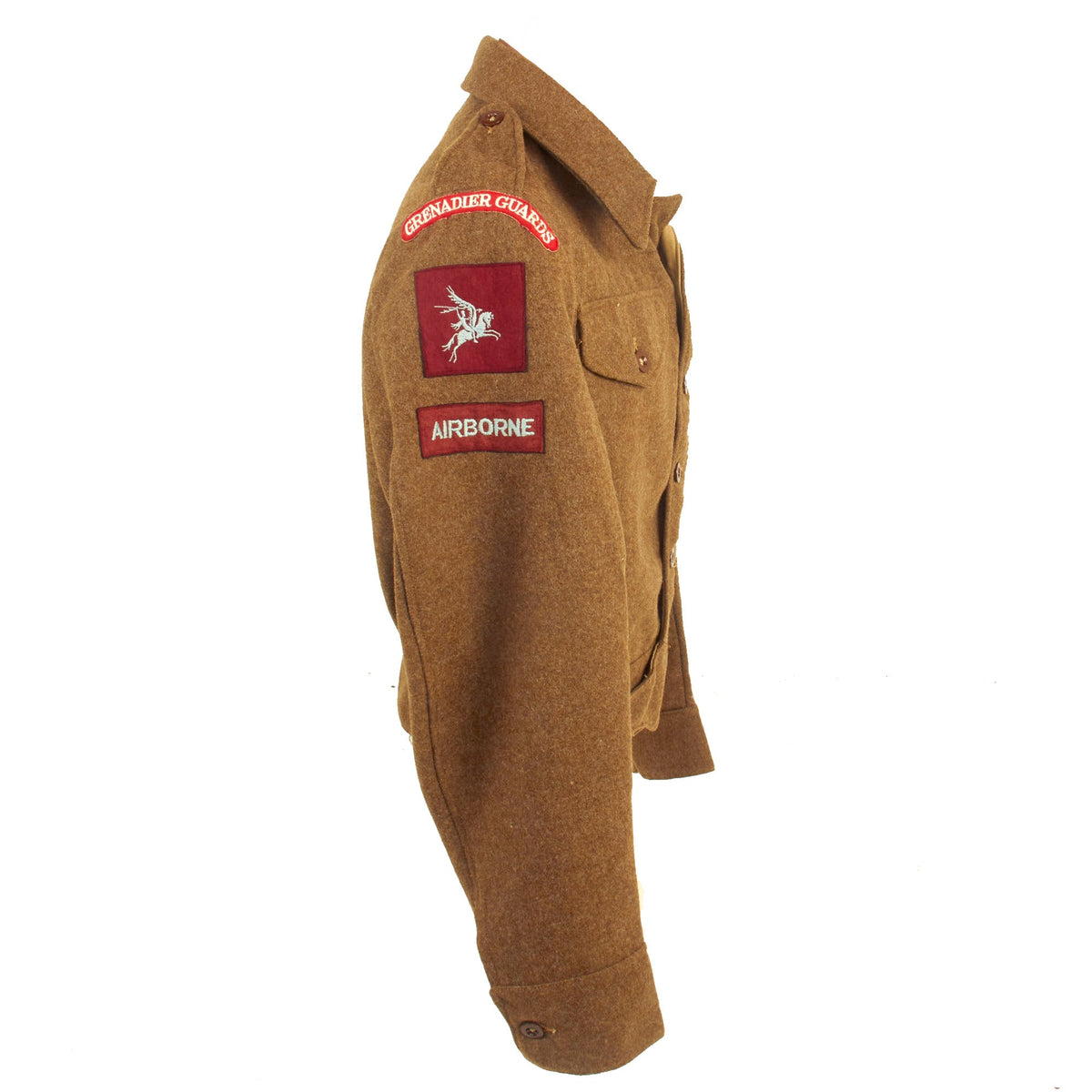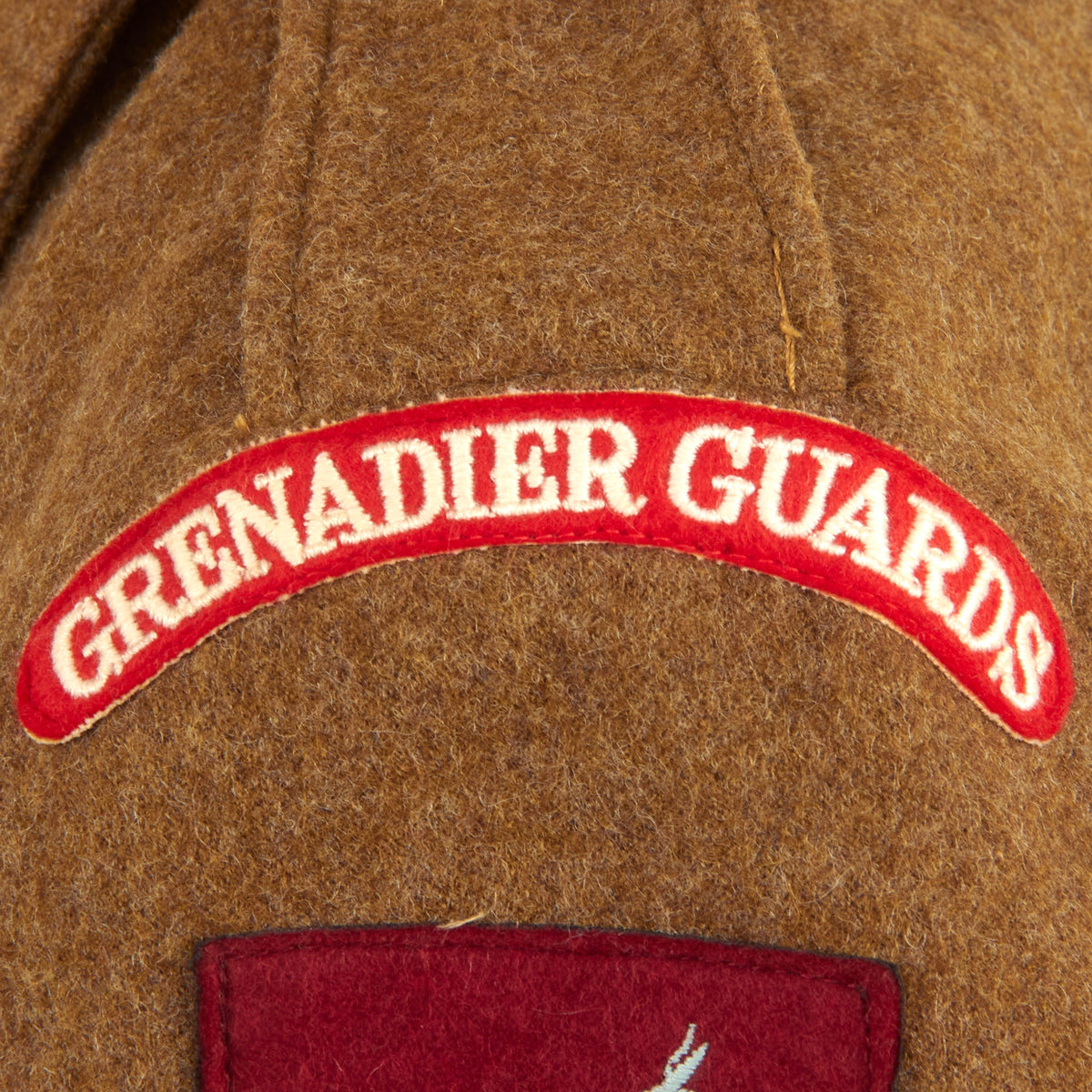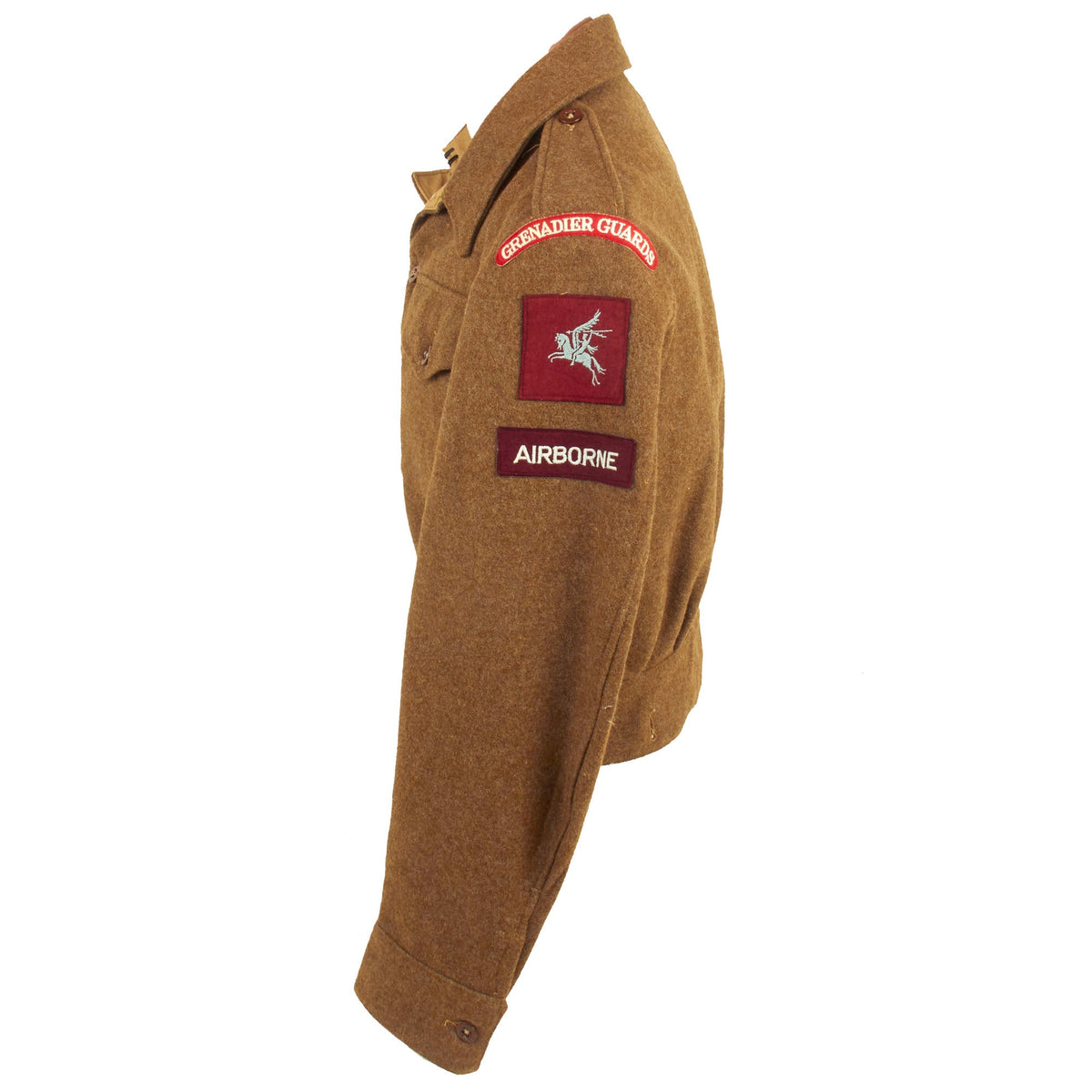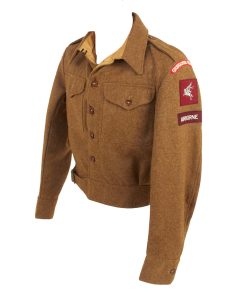Original British WWII Grenadier Guards P-40 “Battledress” Uniform Top With Original Applied Airborne Forces Patches – Dated 1945 Original Items
$ 795,00 $ 238,50
Original Item: Only One Available. This is a very nice condition WWII British P-40 “Battledress” uniform top, with original applied insignia for the Grenadier Guards, Airborne Forces. The patches on the left and right sleeves are the “Grenadier Guards” rocker in red with the blue and red pegasus patch below it and “Airborne” designation beneath.
The jacket is original to WWII and is in fantastic, almost unissued condition. The maker label to the inside shows the maker and size information:
BATTLEDRESS
BLOUSE 1940 PATTERN.
SIZE : NO. 13
HEIGHT 5FT. 11INS. TO 6FT. 0INS.
BREAST 30INS. TO 33INS.
WAIST 33 INS. TO 34INS.
S. SINCLAIR LTD.
OCTOBER 1945
this is a very nice example of a WWII used British Battledress and displays wonderfully. Comes more than ready for further research and display.
The Grenadier Guards (GREN GDS) is the most senior infantry regiment of the British Army, being at the top of the Infantry Order of Precedence. It can trace its lineage back to 1656 when Lord Wentworth’s Regiment was raised in Bruges to protect the exiled Charles II. In 1665, this regiment was combined with John Russell’s Regiment of Guards to form the current regiment, known as the 1st Regiment of Foot Guards. Since then, the regiment has filled both a ceremonial and protective role as well as an operational one. In 1900, the regiment provided a cadre of personnel to form the Irish Guards; while later, in 1915 it also provided the basis of the Welsh Guards upon their formation.
The regiment’s early history saw it take part in numerous conflicts including the War of the Spanish Succession, the War of the Austrian Succession, the Seven Years’ War, and the Napoleonic Wars; at the end of this period the regiment was granted the “Grenadier” designation by a Royal Proclamation. During the Victorian era, the regiment took part in the Crimean War, the Anglo-Egyptian War, the Mahdist War, and the Second Boer War.
During the First World War, the Grenadier Guards was expanded from three battalions to five, of which four served on the Western Front, while later during the Second World War, six battalions were raised, and several were converted to an armoured role as part of the Guards Armoured Division. These units fought in France, North-West Europe, North Africa and Italy.
After the Second World War the regiment was reduced first to three battalions, then to two, and finally to one battalion in the mid-1990s. Major deployments during this time have included operations in Palestine, Malaya, Cyprus, Northern Ireland, the Gulf War, Afghanistan and Iraq.
Fast Shipping with Professional Packaging
Thanks to our longstanding association with UPS FedEx DHL, and other major international carriers, we are able to provide a range of shipping options. Our warehouse staff is expertly trained and will wrap your products according to our exact and precise specifications. Prior to shipping, your goods will be thoroughly examined and securely secured. We ship to thousands clients each day across multiple countries. This shows how we're dedicated to be the largest retailer on the internet. Warehouses and distribution centres can be located throughout Europe as well as the USA.
Note: Orders with more than one item will be assigned a processing date depending on the item.
Before shipping before shipping, we'll conduct a thorough inspection of the items you have ordered. Today, the majority of orders will be delivered within 48 hours. The delivery time will be between 3-7 days.
Returns
The stock is dynamic and we cannot completely manage it because multiple stakeholders are involved, including our factory and warehouse. So the actual stock may alter at any time. It's possible that you may not receive your order once the order has been made.
Our policy is valid for a period of 30 days. If you don't receive the product within 30 days, we are not able to issue a refund or an exchange.
You can only return an item if it is unused and in the same state as the day you received it. You must have the item in its original packaging.
Related products
Uncategorized
Uncategorized
Uncategorized
Uncategorized
Uncategorized
Uncategorized
Uncategorized
Armoured Fighting Vehicles of the World: AFVs of World War One (Hardcover Book) New Made Items
Uncategorized
Uncategorized
Armored Burgonet Helmet & Polearm from Scottish Castle Leith Hall Circa 1700 Original Items
Uncategorized
Uncategorized
Uncategorized
Uncategorized
Uncategorized
Uncategorized
Angolan Rebel 1970s era 60mm Inert Display Mortar from Angolan Civil War Original Items
Uncategorized
Uncategorized
